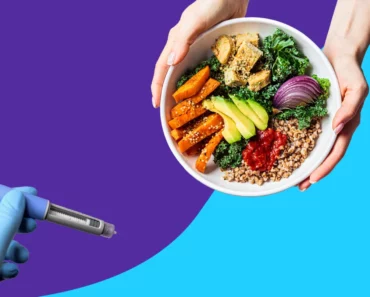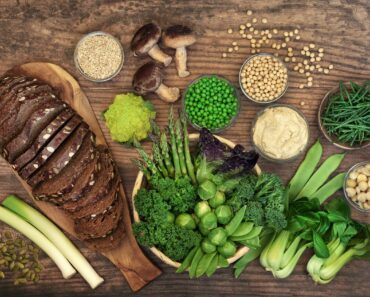5 Essential Tips for a Low Cholesterol Diet: Boost Your Heart Health Today
Introduction
Cholesterol plays a crucial role in our body, serving as a building block for cell membranes and hormones. However, when its levels in the blood become too high, it can lead to serious health issues, including heart disease and stroke. This makes understanding and managing dietary cholesterol essential for maintaining heart health. In this article, we’ll explore the key aspects of a low cholesterol diet, including how much cholesterol you should aim for and how to achieve it through diet and lifestyle changes.
Table of Contents
What is a Low Cholesterol Diet?
A low cholesterol diet is designed to reduce the intake of dietary cholesterol and saturated fats to lower blood cholesterol levels and improve heart health. This diet emphasizes fruits, vegetables, whole grains, and lean proteins, while limiting foods high in cholesterol and saturated fats, such as red meat and full-fat dairy products.
How Much Cholesterol Should You Have in a Low Cholesterol Diet?
The American Heart Association recommends limiting dietary cholesterol to less than 300 milligrams per day for healthy adults and less than 200 milligrams for those with high cholesterol or heart disease. Adhering to these guidelines can significantly reduce the risk of heart disease and stroke.
Foods to Include in a Low Cholesterol Diet
Incorporating a variety of heart-healthy foods is key to a successful low cholesterol diet. Focus on:
- Fruits and Vegetables: Rich in vitamins, minerals, and fiber, they help lower cholesterol.
- Whole Grains: Foods like oats, barley, and whole wheat help absorb cholesterol.
- Lean Proteins: Opt for poultry, fish, and plant-based proteins like beans and lentils.
Foods to Avoid for Lower Cholesterol
To effectively lower your cholesterol, avoid or limit:
- High-Cholesterol Foods: Such as fatty meats, full-fat dairy, and processed foods.
- Trans Fats and Saturated Fats: Commonly found in baked goods, fried foods, and some margarines.
Understanding the Types of Cholesterol
Cholesterol is categorized into LDL (bad) cholesterol, which contributes to plaque buildup in arteries, and HDL (good) cholesterol, which helps remove cholesterol from the bloodstream. Maintaining a balance between these types is vital for heart health.
The Role of Fiber in Managing Cholesterol
Fiber, especially soluble fiber, plays a significant role in lowering cholesterol. Foods rich in soluble fiber, such as oats, beans, and fruits, can help reduce the absorption of cholesterol into your bloodstream.
Lifestyle Changes for Lowering Cholesterol
Beyond diet, lifestyle changes can significantly impact cholesterol levels. Regular physical activity and stress management techniques, such as meditation and yoga, can improve your cholesterol profile and overall heart health.
Reading Food Labels for Cholesterol Management
Understanding food labels is crucial for managing cholesterol. Look for foods low in saturated fat and cholesterol, and be wary of terms like “partially hydrogenated,” which indicates the presence of trans fats.
Supplements and Their Role in a Low Cholesterol Diet
While some supplements, such as omega-3 fatty acids and psyllium husk, can aid in cholesterol management, they should complement, not replace, a healthy diet and lifestyle. Always consult with a healthcare professional before starting any supplement regimen.
Recipes for a Low Cholesterol Diet
Incorporating low cholesterol recipes into your diet can be both delicious and heart-healthy. Experiment with dishes that feature plenty of vegetables, whole grains, and lean proteins to keep your meals exciting and nutritious.
Monitoring Your Progress
Keeping track of your cholesterol levels is important for assessing the effectiveness of your diet and lifestyle changes. Regular check-ups with a healthcare professional can help you stay on track and make adjustments as needed.
FAQs
- Can eating eggs increase my cholesterol levels?
- Eggs are a nutritious food, and moderate consumption is acceptable for most people. Focus on the overall pattern of your diet for cholesterol management.
- Are all fats bad for cholesterol?
- Not all fats are created equal. Monounsaturated and polyunsaturated fats, found in foods like avocados, nuts, and fish, can actually improve your cholesterol levels.
- How often should I check my cholesterol levels?
- Adults should have their cholesterol checked every 4-6 years, or more frequently if they have a history of heart disease or high cholesterol.
- Can physical activity lower cholesterol?
- Yes, regular exercise can help lower LDL cholesterol and raise HDL cholesterol, improving your overall cholesterol profile.
- Is a low cholesterol diet necessary for everyone?
- While not everyone may need to strictly limit their cholesterol intake, adopting a heart-healthy diet benefits everyone, regardless of their current cholesterol levels.
- Can stress affect my cholesterol levels?
- Yes, chronic stress can negatively impact your cholesterol levels and overall heart health. Managing stress through relaxation techniques and regular exercise is important.

Conclusion
Managing your cholesterol through a low cholesterol diet and lifestyle changes is a powerful way to reduce your risk of heart disease and stroke. By understanding how much cholesterol to include in your diet and making informed choices about the foods you eat, you can take significant steps toward improving your heart health. Remember, it’s not just about limiting certain foods but embracing a holistic approach to wellness that includes nutritious eating, regular physical activity, and stress management.
============================================


